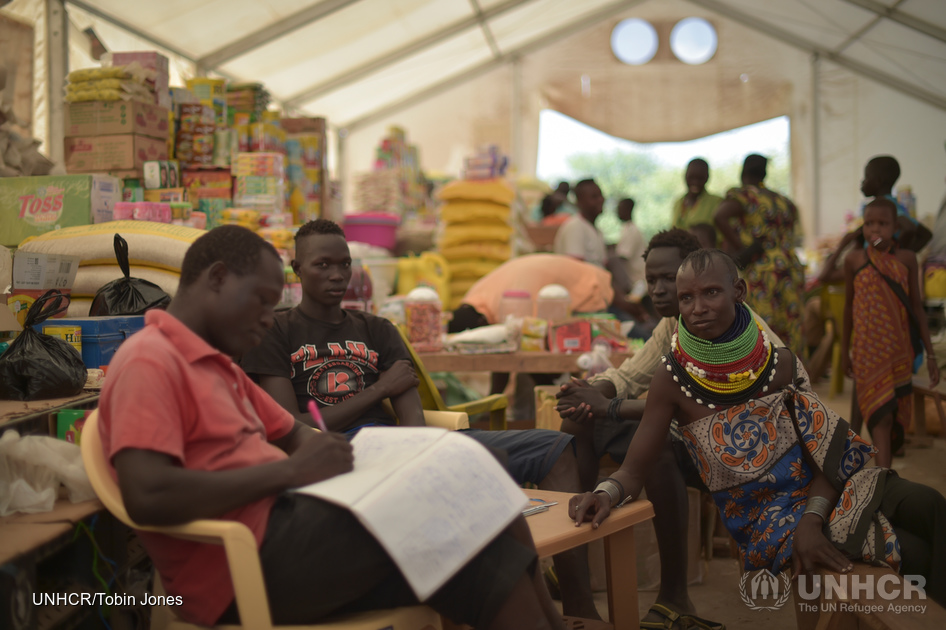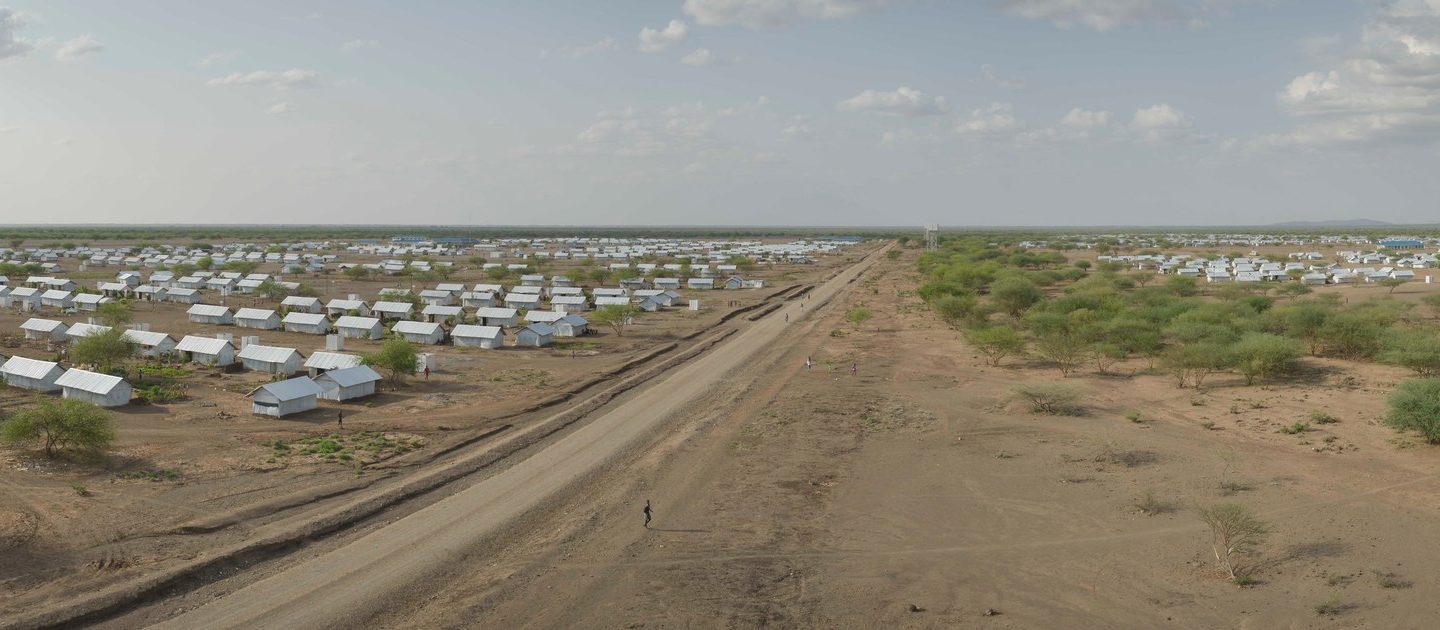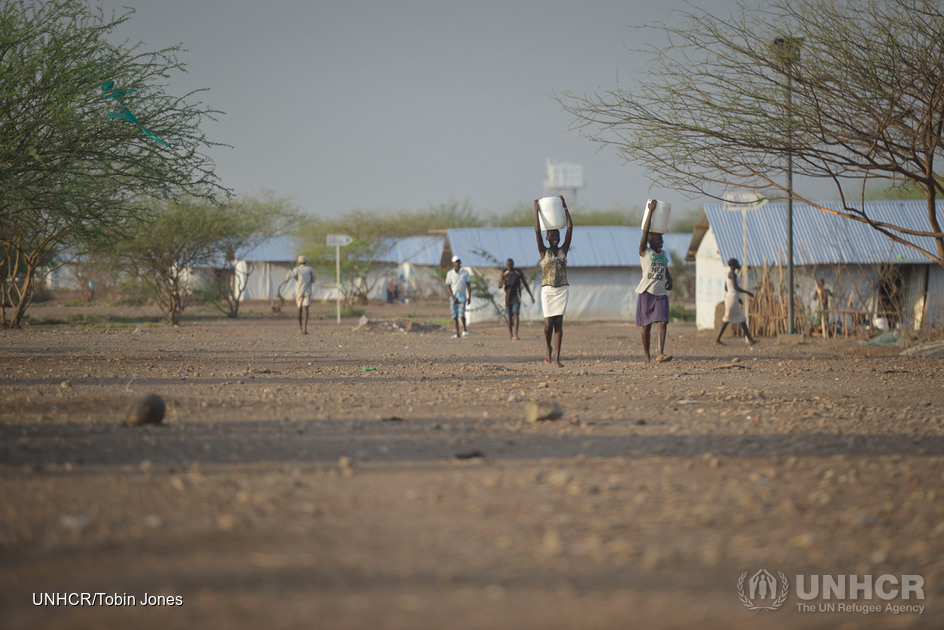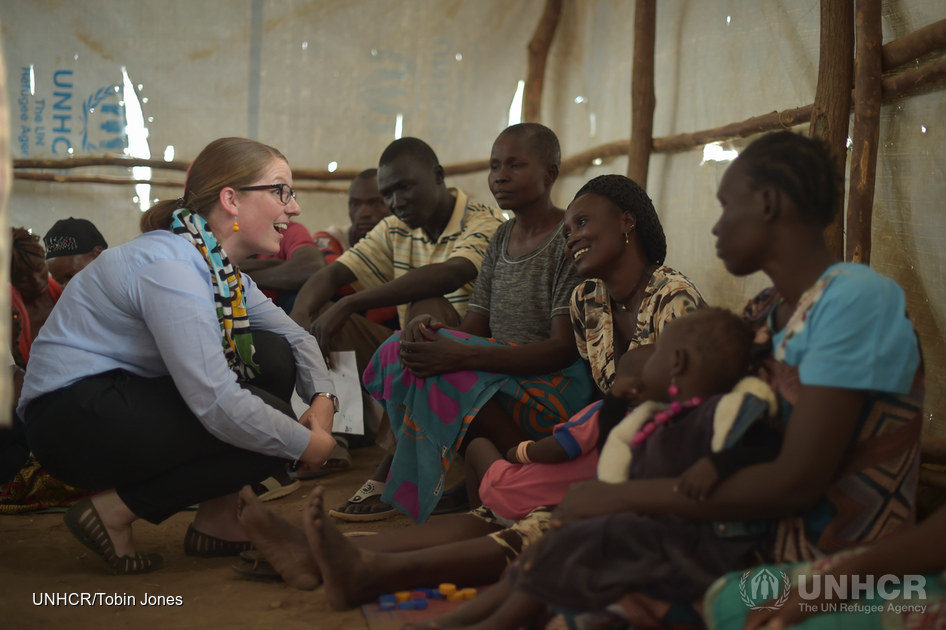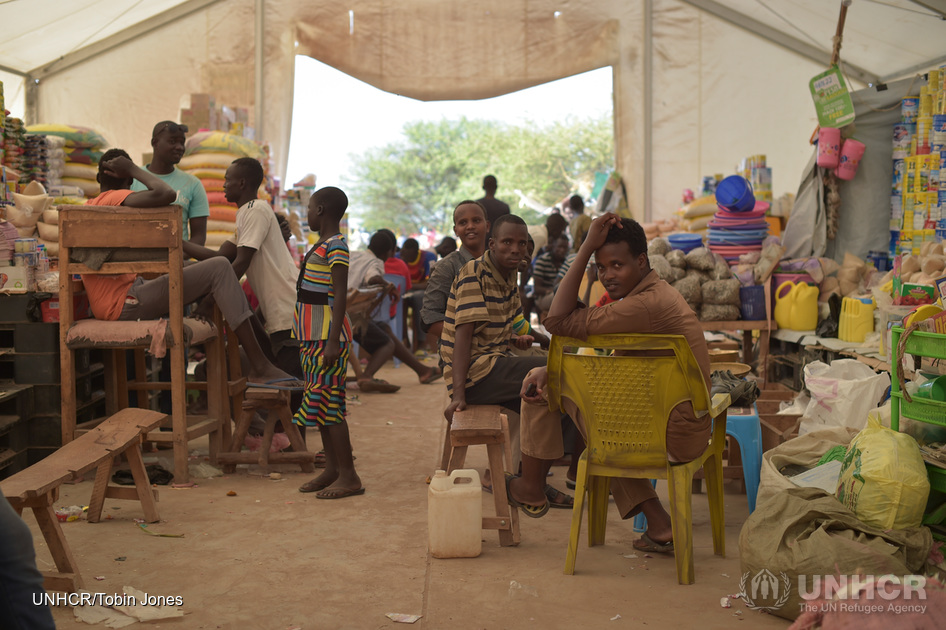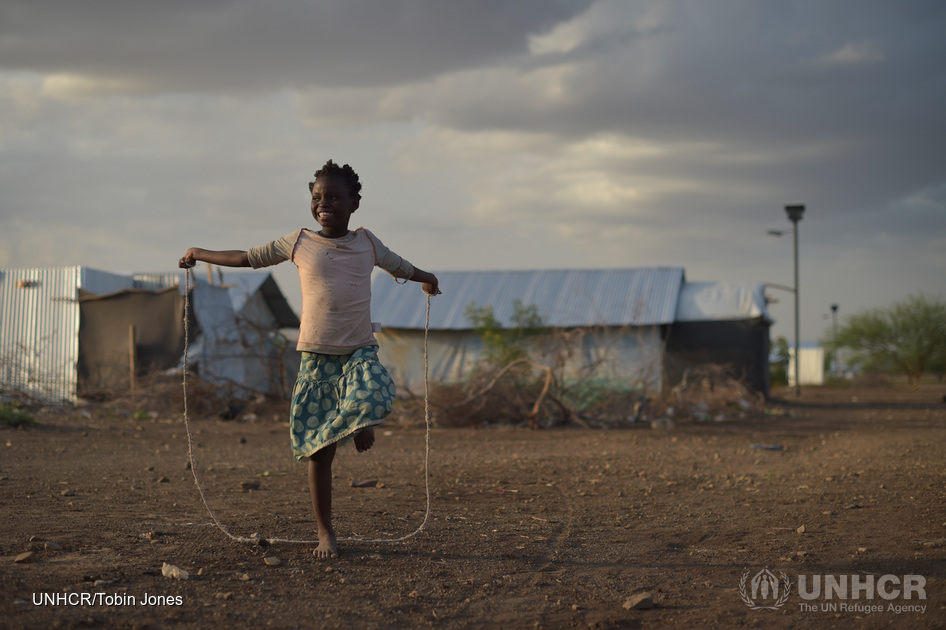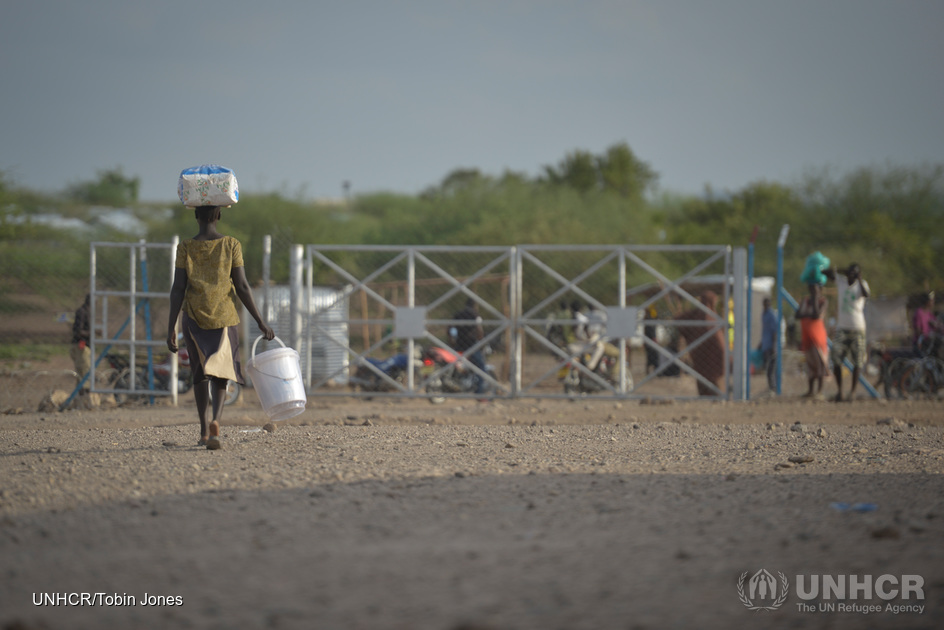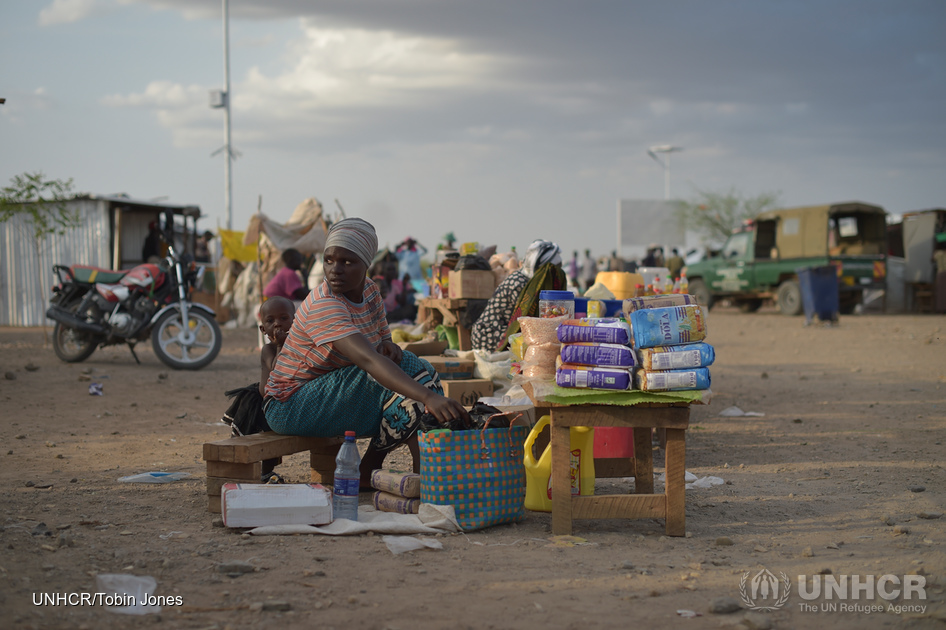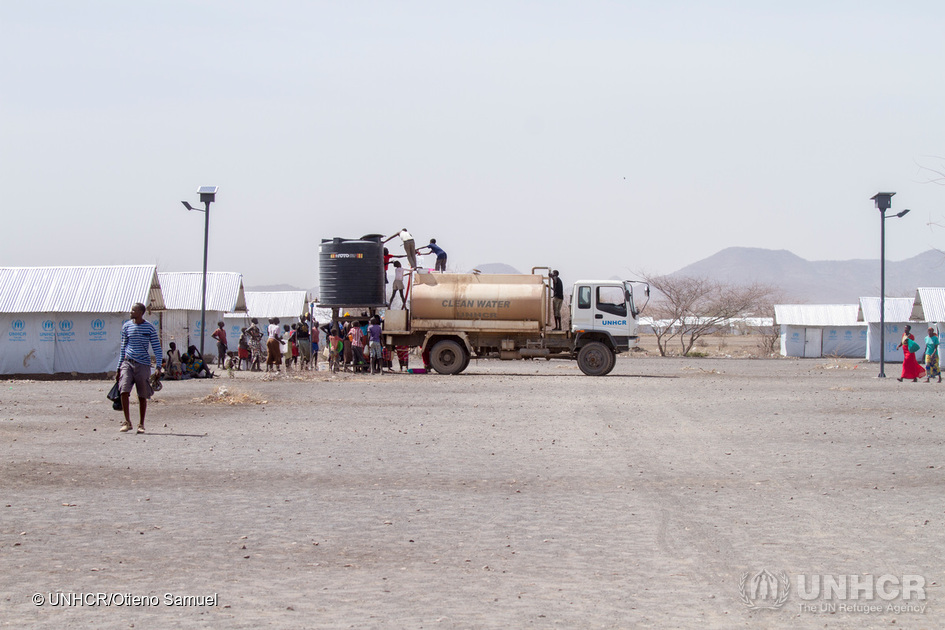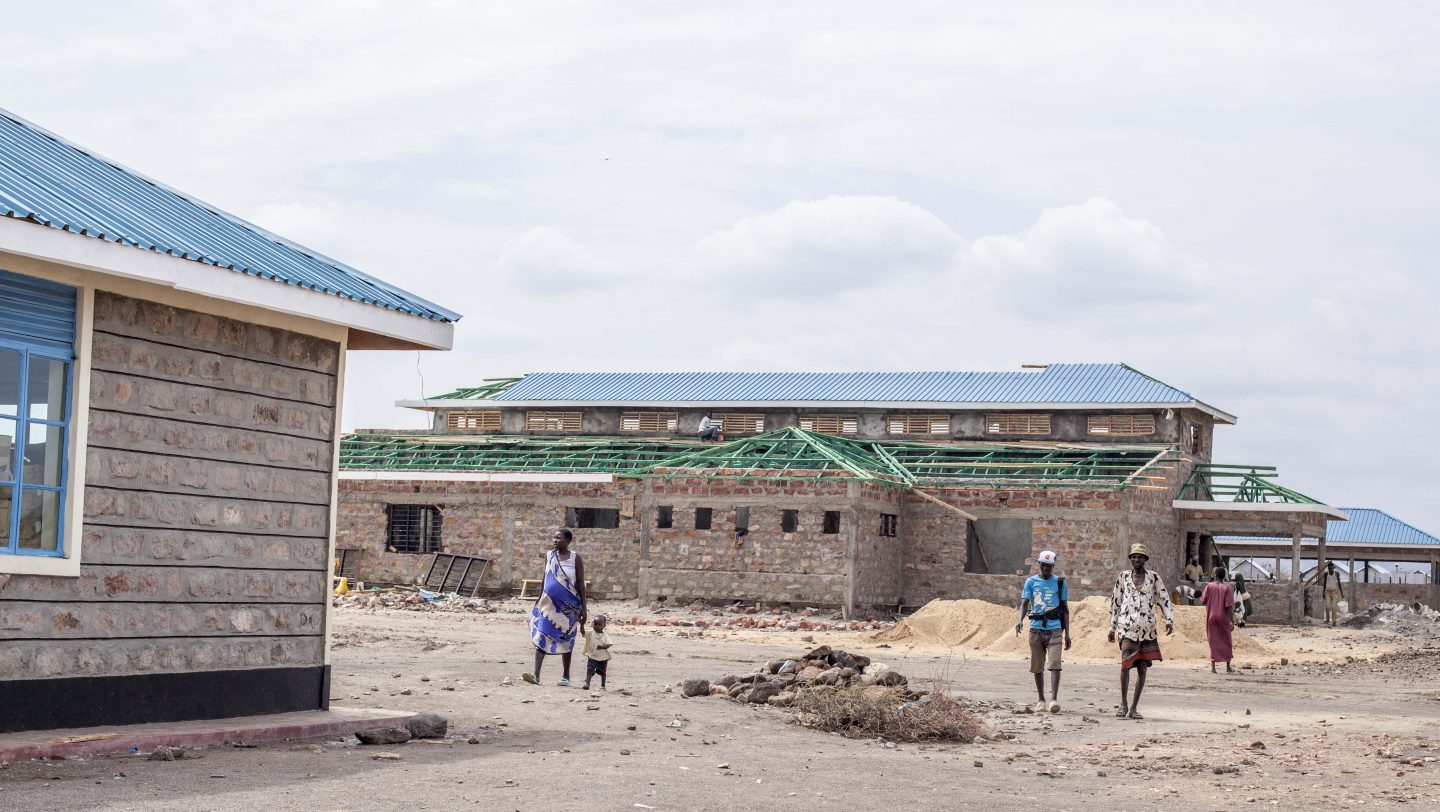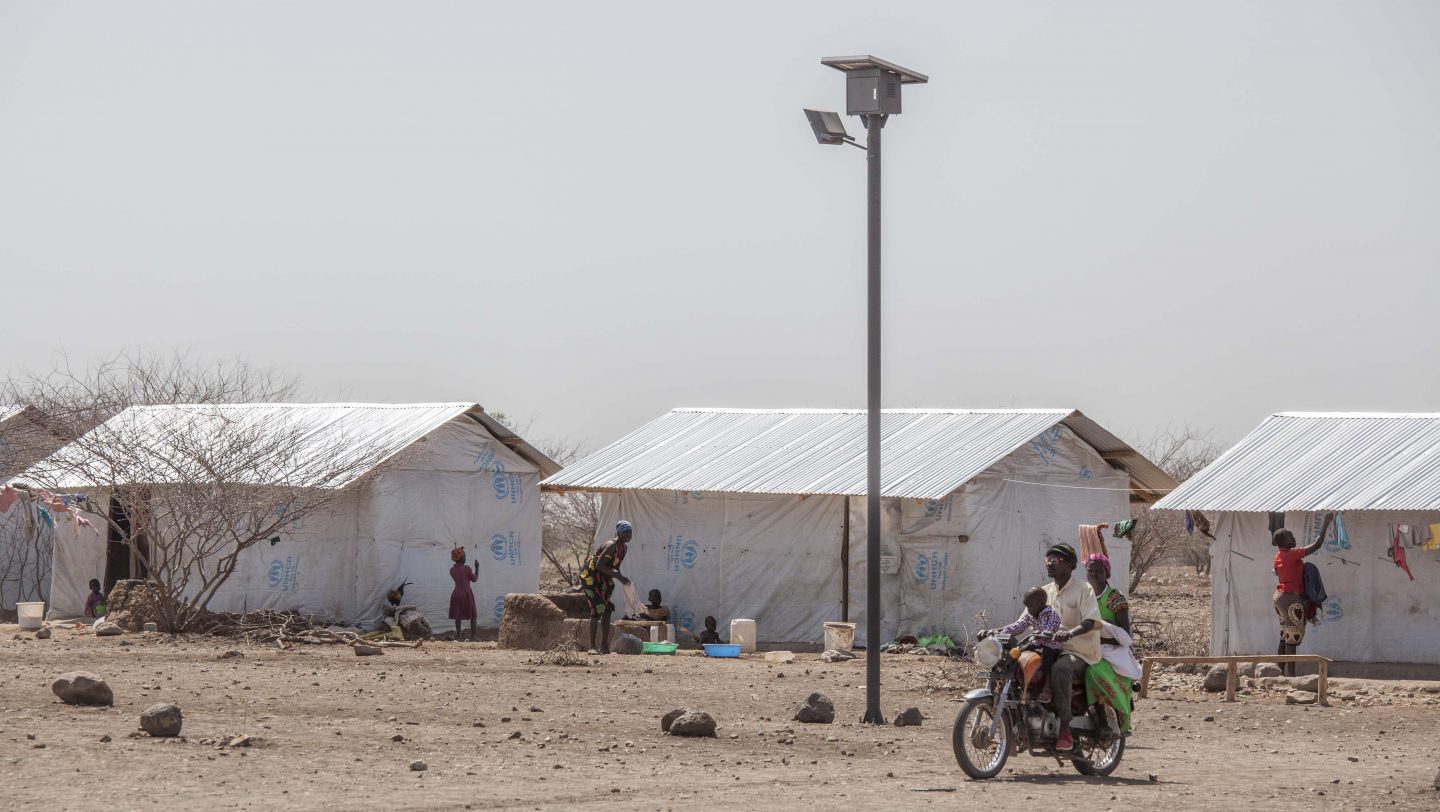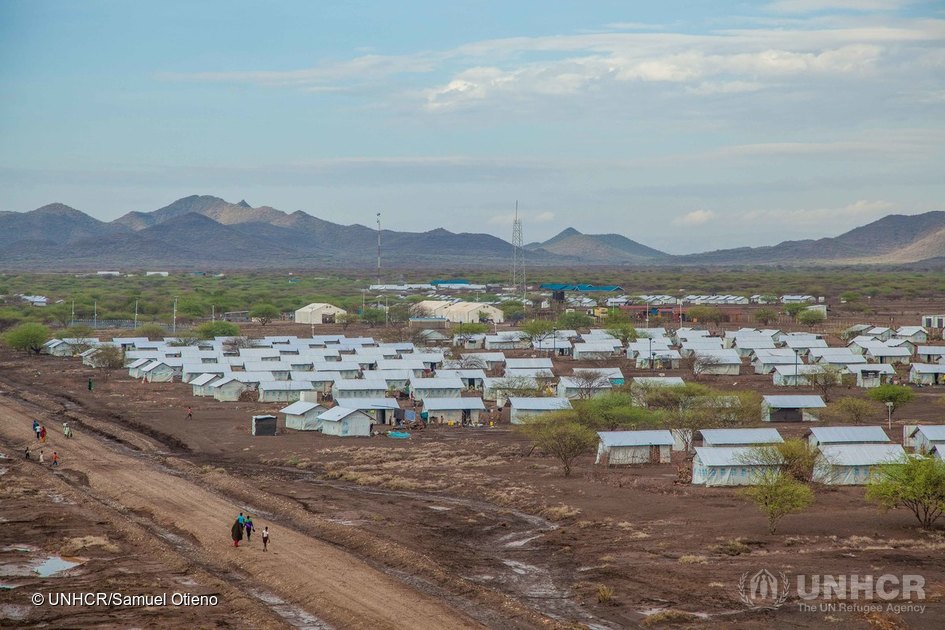During the World Refugee Day commemoration held in Kakuma on 20 June 2015, the land was officially handed over by the County Government and people of Turkana, in the presence of the Governor of Turkana County, Hon. Josphat Nanok, Mr. Victor Okioma (representing the Cabinet Secretary for Interior and Coordination of National Government), and the then Commissioner for Refugee Affairs, Mr. Haron Komen.
The ongoing care and maintenance programme, which was based on the assumption that the refugee situation is temporary, focuses on providing refugees with basic humanitarian assistance, including free food, non-food items and basic services. With the displacement situation ongoing for over two decades, the current form of aid is not tailored to the needs, situation and prospects of refugees and host communities. The economic potential of the camp has not been fully utilized and the host community, which is one of the most marginalized in Kenya, feels that it has not benefited much from the presence of refugees.
At the November 2014 Turkana Roundtable on the Integration of Refugees and Host Community Economies – an event opened by the Governor of Turkana County, Mr. Josphat Nanok – there was a clear consensus on the need for a different approach to refugee assistance programming in the county, to avoid a situation similar to the economic collapse that followed the repatriation of Sudanese refugees in 2005.
UNHCR and the Ministry of Interior and Coordination of National Government agreed with the Turkana County Government to develop a settlement that would promote the self-reliance of refugees and host communities by providing them with better livelihood opportunities and enhanced service delivery. In collaboration with the World Bank, UNHCR developed the Kalobeyei Integrated Social and Economic Development Programme (KISEDP), a multi-agency collaboration to develop the local economy and service delivery at Kalobeyei. This represents a major paradigm shift. The overall objective of this initiative is to re-orient the refugee assistance program to contribute to improvement of the socio-economic conditions of the refugees and host communities, better prepare the host community to take advantage of emerging economic opportunities in upcoming extraction and potential irrigation-fed agriculture and reduce over-dependence on humanitarian aid and support the refugees to achieve durable solutions.
The 14-year project (2016-2030) is led by four thematic working groups and a development committee, and takes the Turkana CIDP (County Integrated Development Plan) as its basis. Key characteristics are sustainable urban and agricultural/livestock development for the host community (estimated population of 20,000) and refugees (estimated population of 60,000), non-discriminatory services for both, avoidance of parallel service delivery and private sector involvement.
The site is to be developed as an urban centre, using the same development and planning techniques, developers, assessments etc. as for cities, in collaboration with the WBG (master plans, community engagement, sustainability etc.). Conceptual framework for the development is the Local Economic Development (LED) approach, to facilitate collaboration between public, business and non-governmental sector partners to create better conditions for economic growth and employment generation in Kalobeyei.
Both refugees and host communities will benefit from: (a) investments in basic infrastructure and access to social services; and (b) increased opportunities for supporting income generating activities. The Program will include features to promote community participation and ownership. Refugee and host communities will play an increased role in prioritizing needs, identifying service delivery and livelihoods interventions, and in monitoring the implementation of projects. The increased community voice and role in budget decision-making, design and implementation of development interventions will support social accountability and could contribute to improved social cohesion between refugees and host communities.
Main achievements thus far and ongoing interventions:
- Education: Development of an agreement with the Teachers Service Commission on teacher recruitment and deployment and training of national and incentive teachers on the specificities of teaching in Kalobeyei settlement; Two schools (one temporary) have been constructed and are providing education to over 8000 primary school learners. Construction of an additional school by UNHCR is ongoing. UNICEF is expected to construct two additional primary and one secondary school.
- Health: Construction and operationalization of health centre, expected completion of maternity ward by the end of April and the planned completion of the feasibility study on the provision of health insurance (by the national provider NHIF) by June 2017.
- Livelihoods: Identification and capacity building of 22 Village Savings and Loans (VSL); business skills training and entrepreneurship development to ensure that 1,000 persons have access to various livelihood interventions.
- Markets: A capacity building strategy for farmer organizations has been developed; two vegetable host community farmer groups have been identified for support to sell vegetables with Kalobeyei and Kakuma traders; two host community farmer organizations have been contracted and supplied grains to WFP; County government has allocated funds to buy fortified flour from small scale milling groups for the school meals programme.
- Agriculture and Irrigation: Refugee and host community profiling to identify those interested in farming has been done; beneficiary registration is on-going for refugee and host community around Kalobeyei; establishment of kitchen gardens established during the March-April – May 2017 rains; ten irrigation schemes to be identified in Napeikar, Nanyee, Kaitese, Kabulokor, Kalemnyang/kotela, Kang’alita, Moruese, Nabuin, Napuu, Nangitony.
- Child Protection: A Child Protection field office has been opened in Kalobeyei; two national staff and 15 incentive workers and 10 child protection volunteers have been placed in Kalobeyei to strengthen case management services for target children.
- Water: The construction of a 13km pipeline from Tarach seasonal river to Kalobeyei settlement was completed. Currently, piping within cluster one of Kalobeyei settlement is ongoing. Cluster one residents are now accessing water from the tap stands. Water trucking for Cluster 2 and 3 residents is ongoing. The process of initiating the formulation of Water Master Plan for Kalobeyei and Kakuma commenced with a meeting with the Turkana County Officials in Lodwar. Follow up meetings with all stakeholders is to take place in Lodwar on the 31st March 2017.
- Shelter and infrastructure development: New arrivals have been settled in Cluster 1 and 2 which cannot accommodate more residents. Development of cluster 3 is ongoing. This includes provision of shelter and sanitation facilities, water piping in addition to development of the road network.

